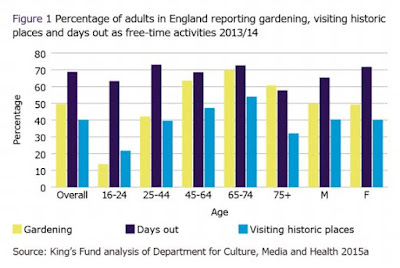The task of removing the unwanted wildflowers is often perceived as a time consuming penalty associated with the hobby of gardening. As such it is regularly cited as an excuse why people cannot be motivated to become involved with horticulture. It is not an easy task to remove weeds, even identifying weeds can be problematical. Some weeds can be very persistent little blighters and others will proliferate the moment you turn your back. If, like me, you are extremely reticent about using any herbicides on your plot, then the options can seem a little daunting.
However, there are a number of strategies that the time poor gardener can employ to minimize the war on weeds. So here are my Top Tips to reduce the weeding in your garden
i. Cut down weeding and embrace the value and beauty of the wildflower intruders. If the Chelsea Flower Show 2019 had any overarching theme it was that naturalistic planting is the most recent trend. Mark Gregory, the gold medal designer of the "Welcome to Yorkshire Garden", advocates leaving small areas of our gardens to go a bit wild. He wants us to see weeds as a good thing in a garden that can be optimized, as opposed to a pest which needs to be stamped out. "Sex your weeds up rather than struggle with them."
ii. Organic mulch, such as chipped bark can be spread over your borders to suppress and smother the weeds. The weeds which are starved of sunlight will struggle to grow, the mulch will in time breakdown and feed your soil, give it texture and generally improve its condition. Grass clippings can also be used in some areas, although it is less attractive and of course you can apply a good layer of compost to a similar effect.
iii. Mulch Mats are an option that I have used extensively in the past. Although a little fiddly to lay down, once in place I would recommend covering entirely with an additional layer of bark or chippings to totally hide the breathable membrane. They are extremely effective and can be a major help for less agile gardeners who find that manual weeding is physically rather a challenge.
iv. Non organic mulch, such as gravels, can be effective and extremely attractive in the right context. It is something I have used with good effect amongst the ornamental grasses. The different colours of gravel can be used to highlight the different drifts of the various grass species. I have also seen other materials employed to similar effect and coloured glass chips offer a variety of quite bright colour options.
vi. Learn to love weeding. This is perhaps easier said than done. But personally I enjoy getting down close and personal with my beds, getting my hands dirty and I appreciate the certain satisfaction gained from pulling a weed and its root totally clear of the soil. Of course, this is hardly labour saving but it does "ease" the size of the task
“To say nothing of weeds—many of them being plants we used to value but no longer do. They don’t like to die out, you know. (From ‘The Extraordinary Adventures of Doggins’)”
― Terry Pratchett












